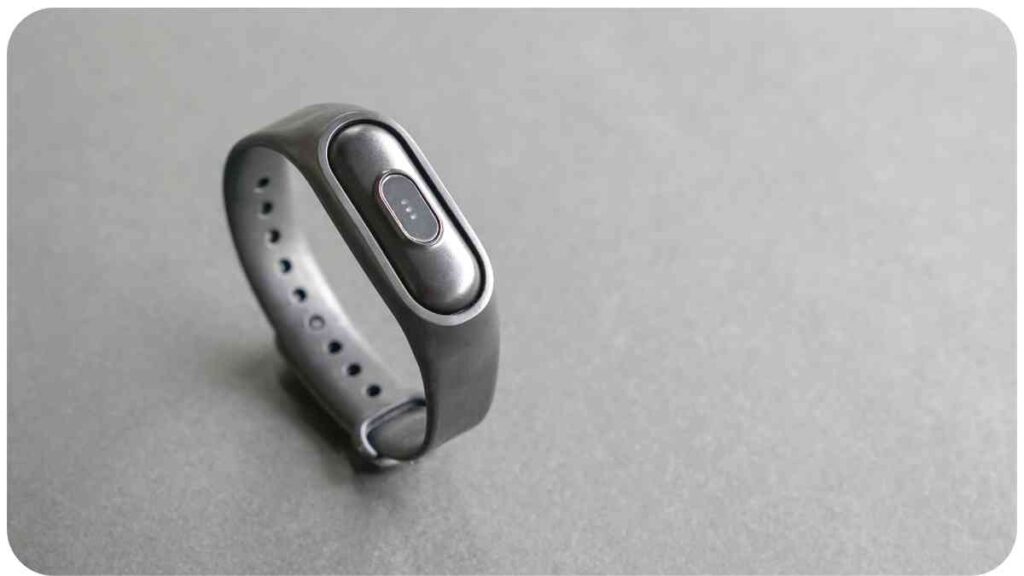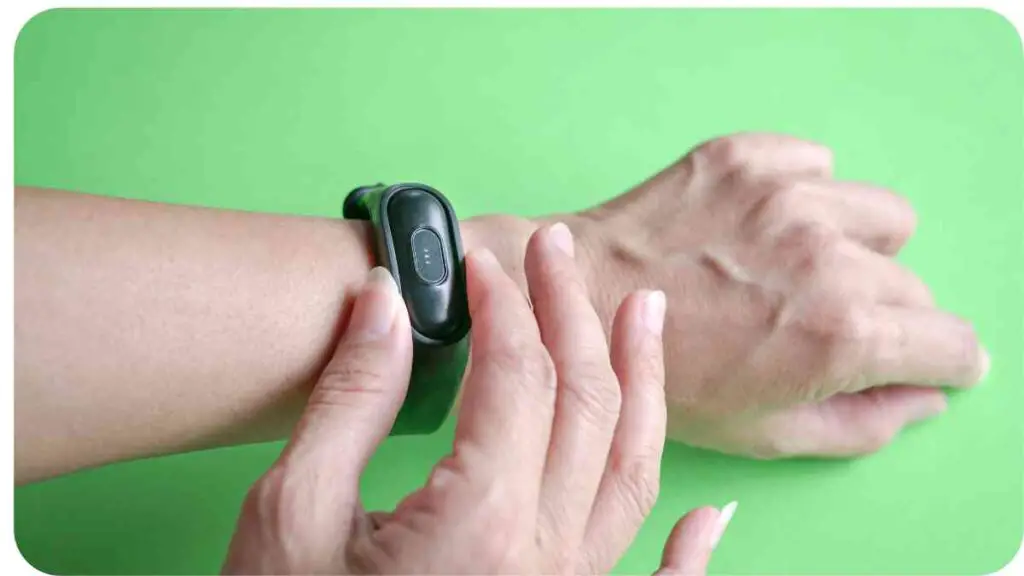Unlock the full potential of your Fitbit with our comprehensive guide on achieving pinpoint accuracy in fitness tracking. Whether you’re an avid runner or casual walker, ensuring your Fitbit provides precise data is vital for meaningful health insights.
Discover how to calibrate step counts and heart rate, debunk common myths, and maintain your Fitbit for longevity. Dive into a wealth of tips, comparisons, and expert advice to elevate your fitness journey.
| Key Takeaways |
|---|
| 1. Why Calibrate Your Fitbit: Ensure accuracy for meaningful fitness tracking. |
| 2. Calibrating Step Count: Measure stride length, input it in settings for accurate steps. |
| 3. Calibrating Heart Rate: Position Fitbit correctly, keep it clean for accurate heart rate data. |
| 4. Maintaining Calibration: Regular checks and recalibration ensure long-term accuracy. |
| 5. Fitbit Longevity Tips: Handle with care, update software, clean regularly, and check hardware integrity. |
| 6. Comparing Fitbit: Fitbit offers a user-friendly interface, diverse features, and a strong community. |
| 7. Final Recommendations: Invest in health, use Fitbit data alongside professional advice, and combine it with other metrics. |
| 8. FAQs: Address common questions about calibration and Fitbit use. |
Why Calibrate Your Fitbit?

Your Fitbit is more than a stylish wrist accessory; it’s a data-driven tool integral to your fitness journey. For this data to be truly valuable, it must be accurate. Picture dedicating months to training based on inaccurate information frustrating, right?
Accurate calibration ensures that every step, heart rate, and calorie burned is a precise reflection of your efforts, guiding you toward your fitness goals with confidence. Don’t let inaccurate data hinder your progress; calibrate your Fitbit for an optimized and reliable tracking experience.
When venturing into the great outdoors, it’s crucial to carry the right equipment. Hiking essentials can make or break your experience. Whether you’re tracking your hike with a Fitbit, these essentials ensure a safe journey
The Significance of Precision in Fitness Measurements
In the realm of fitness and well-being, accurate measurements stand as the linchpin between progress and stagnation. Drawing from personal experience, genuine progress serves as unparalleled motivation. A calibrated Fitbit emerges as the key to unlocking this motivation, guaranteeing that each step and heartbeat contributes authentically to your journey.
The assurance of accuracy not only propels you towards your goals but also eliminates the barriers that could hinder your path to genuine and transformative fitness achievements. Embrace the power of precision with a calibrated Fitbit for a journey marked by tangible and inspiring results.
Mastering Fitbit Calibrations

What is Calibration?
Think of calibration as tuning an instrument – just as a musician meticulously tunes their guitar before a performance, your Fitbit deserves the same attention for precise data. Calibration meticulously aligns your device’s measurements with established standards, ensuring unparalleled accuracy in every recorded metric.
.
Why Fitbit Devices Need Calibrating

Even top-tier devices can gradually veer from pinpoint accuracy over time. Recall that instance during my half-marathon training when my step count seemed askew? A simple yet overlooked solution emerged – calibrating my Fitbit. Don’t let inaccuracies derail your fitness journey; regular calibration is a small effort for substantial data precision.
Table: Common Fitbit Calibration Misconceptions
| Misconception | Reality |
| Fitbit devices never need calibrating | All devices can benefit from calibration |
| Calibration is a complicated process | With the right guide, it’s straightforward |
| Only step counts need calibrating | Heart rate and other metrics need it too |
Calibrating Your Fitbit for Precision
Now, let’s get into the meat of the matter: the step count.
Measuring Your Stride Length
Your stride length, the distance covered in one step, holds the key to accurate step counts. To measure it effectively, select a track or a known distance, tally your steps during a walk or run, and subsequently divide the distance by your step count.
This fundamental calibration step ensures that every stride is meticulously accounted for, providing you with a step count that mirrors your actual physical activity.
For active women who enjoy cycling, protecting sensitive areas is vital. Discover various ways to ensure comfort and health for your lady parts during cycling. Check out our article on lady part protection in this insightful read
Setting up Stride Length on Fitbit
With your meticulously measured stride length in hand, it’s time to integrate this game-changing metric into your Fitbit settings. The impact is transformative. Once I configured mine, a remarkable shift occurred – a more faithful and precise representation of the distances covered during my runs unfolded.
Ensure your Fitbit settings align with your unique stride length, and witness the enhanced accuracy that propels your fitness tracking to new heights. This seemingly small adjustment resonates profoundly, offering a tangible reflection of your running achievements.
Table: Recommended Stride Lengths by Height
| Height | Average Stride Length (Walking) | Average Stride Length (Running) |
| 5’2″ | 2.2 feet | 4.1 feet |
| 5’5″ | 2.3 feet | 4.3 feet |
| 5’8″ | 2.4 feet | 4.5 feet |
| 6’0″ | 2.5 feet | 4.7 feet |
Calibrating Heart Rate on Your Fitbit
Heart Rate Tracking Essentials
Heart rate tracking stands as a pivotal feature for numerous Fitbit enthusiasts, whether you’re focused on monitoring your resting heart rate, tracking peak exercise rates, or merely intrigued by those sporadic heart rate spikes post-morning coffee. In this realm, accuracy reigns supreme.
Why Heart Rate Accuracy Matters
Accurate heart rate data unveils critical insights into your well-being, reflecting recovery post-workouts, cardiovascular health, and even stress levels. A personal anecdote emphasizes the significance – my Fitbit indicating an unusually high resting heart rate prompted a medical visit, revealing an impending flu.
Tips for Improving Heart Rate Measurements
Positioning is Key: Elevate your Fitbit higher on your wrist during workouts, approximately two finger-widths above the wrist bone.
Maintain a Snug Fit: Strike a balance – your Fitbit shouldn’t be too tight, yet snug enough to prevent constant movement.
Keep it Clean: Sweat and dirt can disrupt readings. Regular cleaning, based on my experience, is an indispensable practice for pristine heart rate data.
Table: Ideal Fitbit Placement for Accurate Heart Rate Readings
| Activity | Placement | Tightness |
| Daily Activities | 1 finger width above wrist bone | Comfortable |
| Workouts | 2 finger widths above wrist bone for better contact | Snug but not tight |
Troubleshooting Fitbit Calibration
Regularly checking on your Fitbit’s calibration ensures consistent accuracy. It’s like a car service; the more regular you are, the better performance you get.
Addressing Measurement Discrepancies
Encountering occasional discrepancies in your Fitbit data is not uncommon. When uncertainty arises, here’s a valuable tip that has proven its effectiveness for me: initiate a reset and recalibration. This straightforward solution has been my go-to strategy on multiple occasions.
By resetting and recalibrating your Fitbit, you offer it a clean slate, correcting potential inaccuracies and ensuring that subsequent measurements align more closely with your actual activities. This simple yet powerful troubleshooting step helps maintain the integrity of your fitness data, fostering a tracking experience grounded in precision and reliability.
Curious if cycling classes are effective for weight loss? One cyclist shares their experience, offering valuable insights on burning calories and getting fit through group classes. Explore more in this weight loss guide.
A Quick Fix for Fitbit Measurements
Recognizing Discrepancies
Encountering occasional disparities in your Fitbit data is part of the tracking journey. When uncertainties arise, don’t fret. Here’s a reliable tip I’ve employed numerous times: initiate a reset and recalibration.
Simple Solution for Precision
When in doubt about the accuracy of your measurements, a reset and recalibration act as a swift remedy. This uncomplicated solution offers a fresh start, rectifying potential inaccuracies and ensuring your Fitbit aligns with your actual activities. Embrace this straightforward troubleshooting step to uphold the reliability of your fitness data, providing a consistent and precise tracking experience.
Table: Troubleshooting Common Fitbit Calibration Issues
| Issue | Possible Reason | Solution |
| Inconsistent step count | Stride length has changed | Re-measure stride and update settings |
| Erratic heart rate readings | Poor device placement or dirt buildup | Adjust placement or clean the device |
| Battery drains quickly | Software not updated | Ensure you have the latest update |
Fitbit’s Contribution to Holistic Health Monitoring
While Fitbit provides a wealth of data, it’s essential to see the bigger picture of your health.
Navigating the Health Landscape
While Fitbit offers a trove of data, it’s crucial to recognize its role within the broader health spectrum.
Understanding Fitbit’s Limitations
Despite its advanced capabilities, it’s imperative to acknowledge Fitbit’s boundaries. This sophisticated tool, for all its features, cannot substitute professional medical advice or provide diagnostic insights. It stands as a valuable component within your health toolkit, offering data that complements but does not replace the expertise of healthcare professionals.
Table: Other Health Monitoring Devices to Complement Your Fitbit
| Device | Metric Measured | How it Complements Fitbit |
| Sleep Tracker | Sleep patterns and quality | Provides deeper insight into sleep cycles |
| Smart Scale | Weight, BMI, Body Fat % | Gives a holistic view of fitness progress |
| Blood Pressure Monitor | Systolic & Diastolic pressure | Important for overall cardiovascular health |
Synergizing Fitbit Data with Holistic Metrics
For a comprehensive understanding of your well-being, I advocate integrating Fitbit data with other health metrics. By combining Fitbit’s insights with additional measures – such as correlating sleep data with dietary habits – you unlock a holistic perspective.
This synergistic approach empowers you to make informed health decisions, leveraging multiple data points to craft a well-rounded and personalized wellness narrative.
Dispelling Fitbit Calibration Myths

There’s a lot of chatter about Fitbit calibration online. Some of it accurate, and some… well, let’s bust some myths.
Navigating the Calibration Narrative
In the online realm, discussions about Fitbit calibration abound, encompassing both accurate insights and misinformation. Let’s sift through the chatter and debunk prevalent myths.
Debunking Popular Misconceptions
Amidst countless forums and user groups boasting an array of “hacks” for Fitbit calibration, distinguishing between fact and fiction is paramount. In this era of shared experiences and digital wisdom, it’s crucial to sift through the myriad tips to uncover the truth.
Let’s unravel the myths surrounding Fitbit calibration, ensuring users are armed with accurate knowledge and steering clear of potentially misleading practices.
Synchronization issues with fitness apps can be frustrating. Learn how to resolve problems like a pro. Find the best solutions for Nike Running App syncing issues in this informative article.
Table: Myth vs. Reality – Fitbit Calibration Edition
| Myth | Reality |
| Calibrating your Fitbit will void its warranty | Calibration is recommended and won’t affect your warranty |
| Fitbit’s heart rate tracker is as accurate as medical devices | While advanced, Fitbit isn’t a replacement for medical-grade equipment |
| You only need to calibrate your Fitbit once | Regular recalibration ensures long-term accuracy |
Prolonging Fitbit Lifespan
Recall the moment I accidentally submerged my Fitbit in the pool and experienced panic? While certain Fitbits boast water resistance, understanding their limits is paramount. Always check your device’s resistance level before subjecting it to elements. This simple precaution safeguards against unexpected mishaps, preserving your Fitbit’s functionality.
Caring for Your Fitbit
Similar to any tech gadget, diligent care and maintenance ensure your Fitbit’s enduring performance over the years.
Embracing Regular Software Updates
Just as you wouldn’t overlook your smartphone updates, the same diligence applies to your Fitbit. Regularly updating your device’s software isn’t just about bug fixes; it introduces new features and enhanced algorithms, contributing to improved accuracy.
Treat your Fitbit to these updates to ensure it stays at the forefront of technological advancements, offering you optimal functionality throughout its lifespan.
Table: Fitbit Care and Maintenance Checklist
| Maintenance Task | Frequency | Why It’s Important |
| Clean with a soft cloth | Weekly | Removes dirt and sweat that can affect readings |
| Check for software updates | Monthly | Ensures the latest features and best performance |
| Calibrate for step count and heart rate | Monthly | Keeps measurements accurate over time |
| Check band and hardware integrity | Quarterly | Ensures the device stays in place for accurate readings |
Navigating the Fitness Tracker Landscape
There’s a plethora of fitness trackers on the market. How does Fitbit stack up against them?
Diverse Fitness Tracker Landscape
In the vast realm of fitness trackers, the choices can be overwhelming. Let’s explore how Fitbit distinguishes itself among its counterparts.
How Fitbit Stands Out
In my exploration of various fitness trackers, Fitbit consistently rises above the competition. Its distinction lies in a trifecta of features a user-friendly interface, a diverse array of features, and an expansive community. Fitbit isn’t merely a device; it’s an entire ecosystem that seamlessly integrates into your lifestyle.
This amalgamation of user-centric design, rich features, and a thriving community sets Fitbit apart, offering users a holistic and unparalleled fitness tracking experience.
Table: Fitbit vs. Other Popular Fitness Trackers
| Criteria | Fitbit | Garmin | Xiaomi Mi Band |
| Price Range | $58.50 | $299.99 | $30 |
| Heart Rate Monitoring | Yes | Yes | Yes |
| GPS | Selected models | Most models | Limited models |
| Sleep Tracking | Yes | Yes | Yes |
| Battery Life | 4-7 days (varies by model) | 7-14 days (varies by model) | 14 days |
| Community & Social Features | Strong community features | Limited community features | Minimal community features |
Final Thoughts and Recommendations
Simplified Calibration: A Worthwhile Endeavor
Though calibration might appear intimidating at first, it swiftly becomes a straightforward practice with familiarity. Consider it a small investment in maximizing the potential of your Fitbit for precise health tracking.
Your Fitbit: An Investment in Health
Reflect on your Fitbit as more than a gadget; it’s an investment in your well-being. Just as you prioritize servicing your car for optimal performance, calibrating your Fitbit is akin to maintaining its peak functionality.
This commitment ensures that every step, heartbeat, and calorie measured contributes meaningfully to your fitness journey. Embrace the simplicity of calibration, for in doing so, you empower your Fitbit to be a reliable companion on your path to improved health and wellness.
The UCI (Union Cycliste Internationale) is the governing body of professional cycling, shaping the sport worldwide. Explore the rich history and influence of UCI in this comprehensive overview. Join the global conversation on cycling’s heartbeat.
Conclusion
In the pursuit of health and well-being, the significance of accurate data cannot be overstated. Through the lens of Fitbit calibration, we’ve unraveled the intricacies of ensuring every step, heartbeat, and calorie is a faithful reflection of your efforts.
As you navigate the evolving landscape of your health journey, remember this fundamental truth: it’s not merely about having data; it’s about having accurate data.
Your Fitbit, when calibrated with care, transforms into a reliable ally, empowering you to make informed decisions and witness genuine progress. Let the precision of your Fitbit be the guiding light on your path to wellness. Here’s to a future filled with insights, achievements, and a healthier, happier you. Happy tracking!
Further Reading
For those who wish to delve deeper into the intricacies of Fitbit calibration, the following resources come highly recommended:
- How to Calibrate a Fitbit: Change Stride Length or Make it More Accurate: This article from Tech Gadgets Canada offers an in-depth guide on tweaking stride length and other settings to improve accuracy.
- How to Calibrate Fitbit for Better Accuracy: Wareable’s guide breaks down the calibration process into simple steps, ideal for those who are new to Fitbit devices.
- Step Counting Not Accurate: This Fitbit Community thread is a treasure trove of real-world experiences and solutions from actual Fitbit users facing step count inaccuracies.
FAQs
How Do I Ensure My Fitbit Counts Steps Accurately?
Calibration is essential for accurate step count. Follow the guidelines in this article to measure your stride length and input it into the Fitbit app.
Can I Calibrate My Fitbit’s Heart Rate Monitor?
Fitbit heart rate monitors are generally accurate, but you can ensure consistent readings by wearing the device correctly. Position it about two finger-widths above your wrist bone during workouts for optimal results.
Why is Calibrating My Fitbit Important?
Calibration helps ensure that you’re getting accurate and reliable data. If your Fitbit is not calibrated, you may get misleading or inconsistent information, affecting your health monitoring and fitness goals.
Will Calibrating My Fitbit Void the Warranty?
No, calibrating your Fitbit will not void its warranty. Fitbit recommends regular calibration to keep your device accurate.
How Often Should I Calibrate My Fitbit?
The frequency of calibration varies based on your lifestyle changes and fitness levels. However, it’s good to check and recalibrate your Fitbit at least once a month.

Hellen James is an outdoor enthusiast, writer, and hiker. She loves to explore the world around her by immersing herself in nature and visiting new places.


